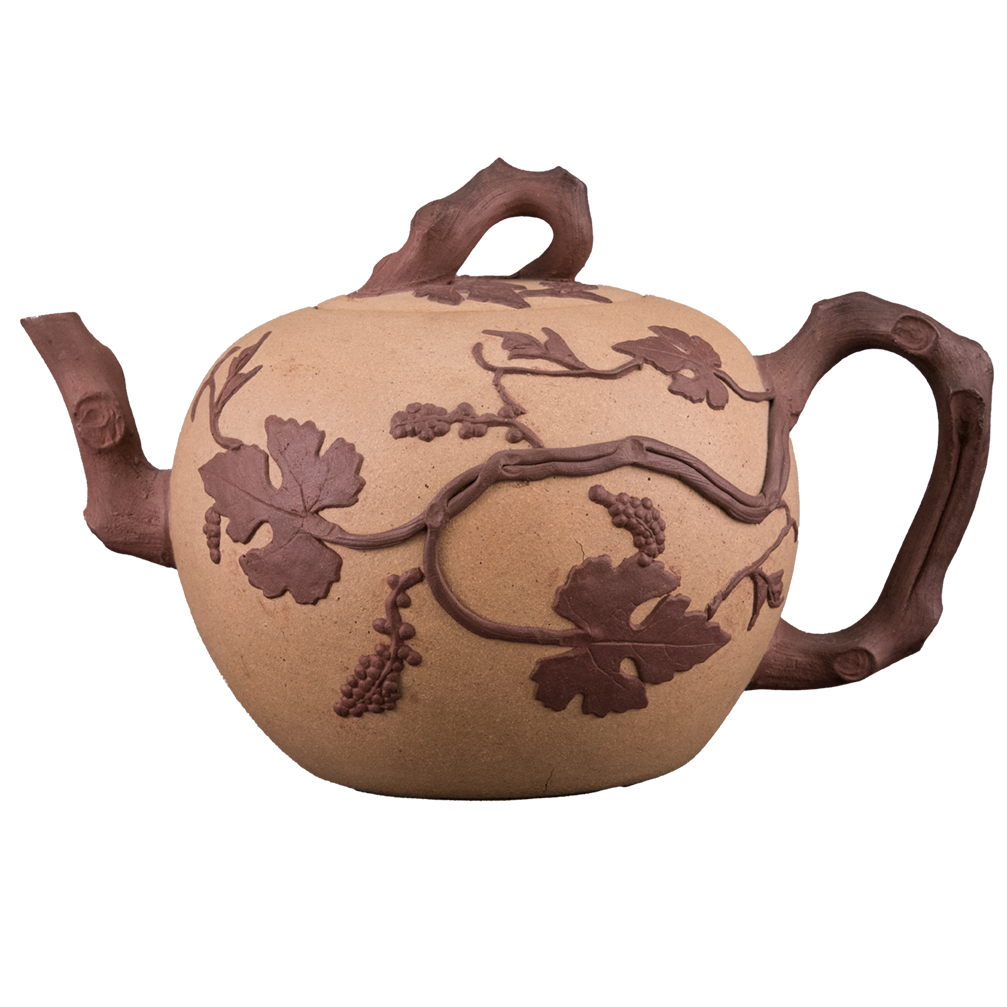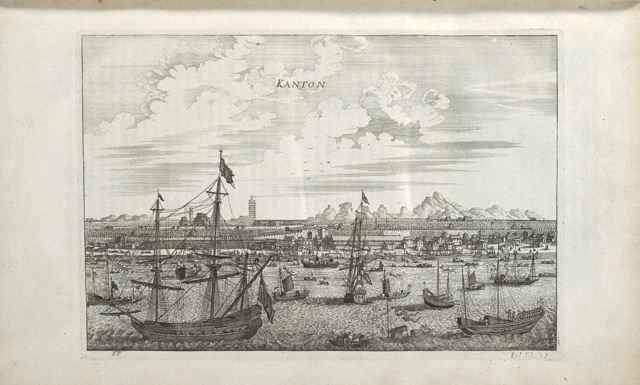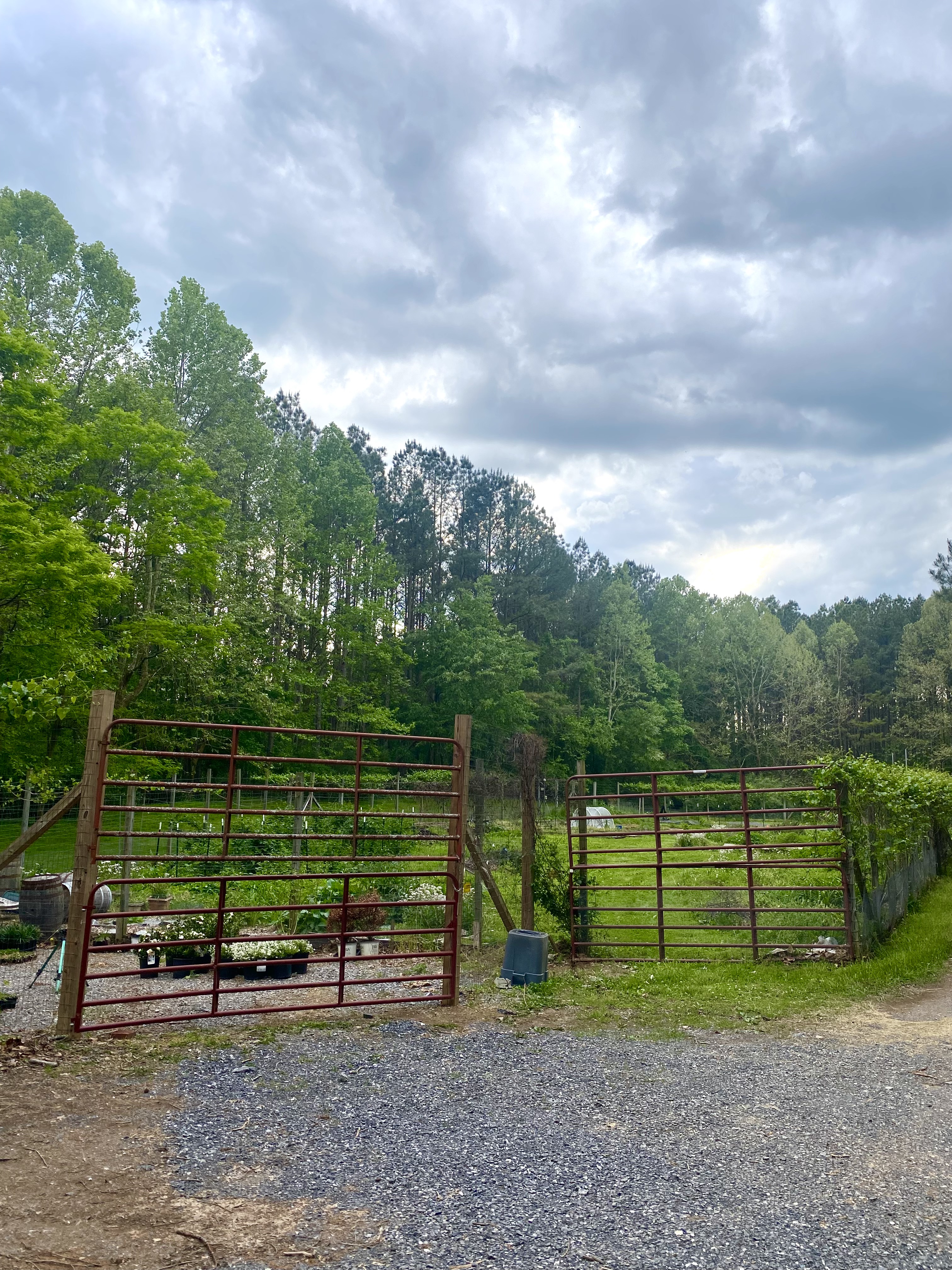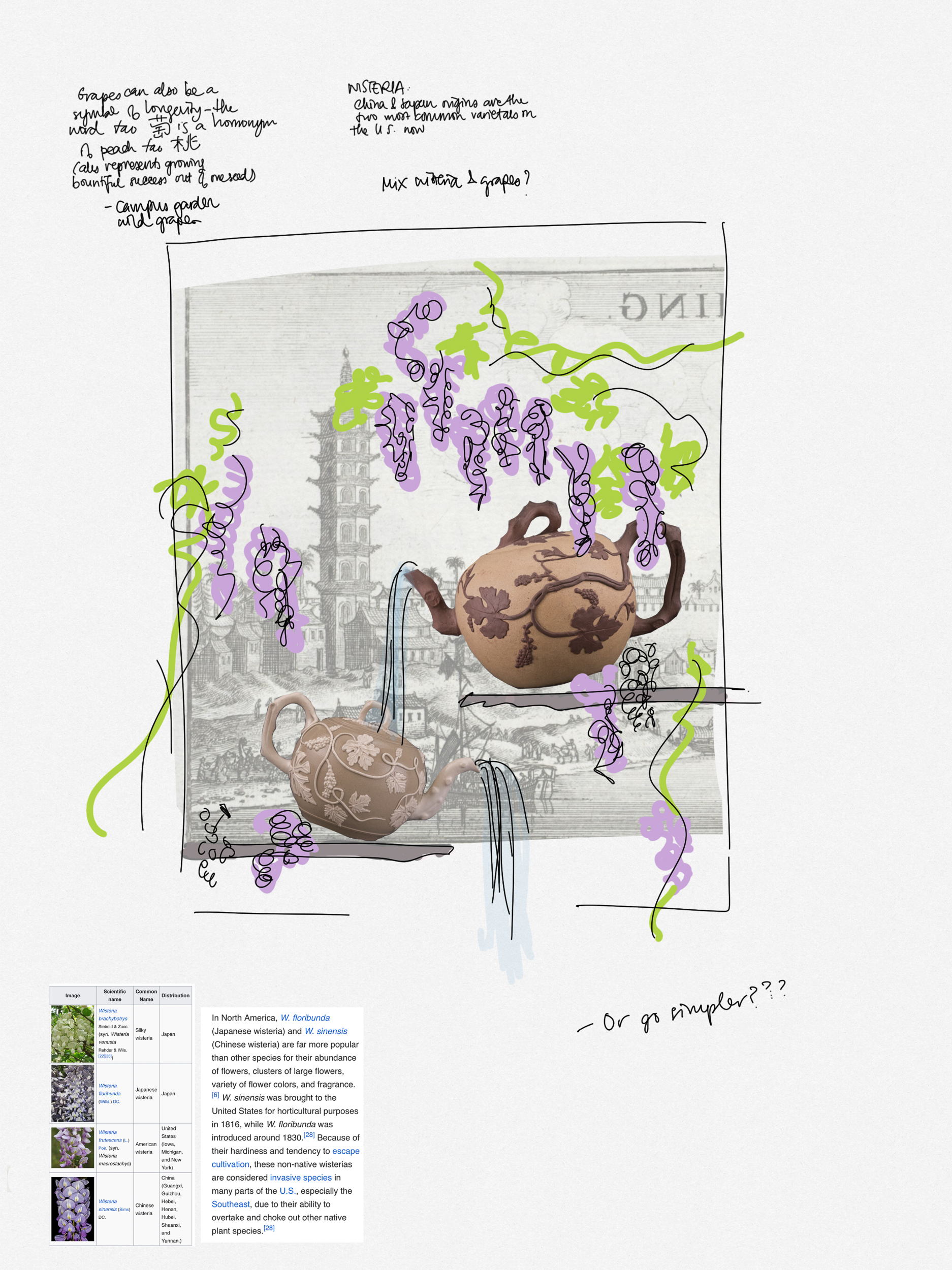ENTANGLEMENT, 2023
Jump to section ︎︎︎
1. Ceramics
2. Early European views on China
3. Flora
4. Behind the scenes: Planning sketch
1. Ceramics
Entanglement features 2 teapots: a yixing teapot made of unglazed stoneware in Yixing, China made in the late 1700s and a salt-glazed stoneware teapot made in Staffordshire, England during the same time period. Within China, yixing pots were considered some of the best vessels for brewing tea due to the qualities of the clay, and the pots were also hugely popular in export to Europe and the Americas alongside the export of tea. Given this immense popularity, European potters in the late 1600s (in the Netherlands and England) began to imitate the yixing pots--the Staffordshire stoneware pot is one such example.The ceramics together highlight the question: what is a copy in good faith versus a forgery? This is a challenging question given the high status of “copying” in Chinese artistic traditions. Furthermore, if the roles were reversed, it begs the question whether a Chinese copy of a Western teapot still be regarded as ingenious.
 Teapot
TeapotMade in Yixing, China, 1725–1775
Made of Stoneware
H. 7.25”, W. 11”
Museum purchase with funds provided by W. Groke Mickey, 2013.8.1ab
 Teapot
TeapotMade in England, 1750–1775
Made of Salt-Glazed Stoneware
H. 4”, W. 6.75”
Museum purchase with funds provided by Herbert G. McKay, 2013.7.1ab
2. Early European views on China
The backdrop to Entanglement is a view of Canton (now Guangzhou), one of the major ports of trade in China during the early years of trade between Western Europe and China starting in the 16th century. The engraving is from Johannes Nieuhof’s 1673 account of China, An embassy from the East-India Company of the United Provinces, to the Grand Tartar Cham, emperor of China..., which was one of the first views of China published in Europe. The full text can be found here. Pictured above: Page 52 of Nieuhof 1673. View of Canton harbor.
Pictured above: Page 52 of Nieuhof 1673. View of Canton harbor.3. Flora
Grapes are a symbol of longevity in Chinese tradition because the word for grapes 萄 (táo) is a homonym of the word for peaches 桃 (táo), which are associated with immortality. Because grapes come in bunches, they can also symbolize having a plentiful and fruitful life. The grapevines used in this still life are wild grapevines from the Washington & Lee Campus Garden. For more information about the Campus Garden and The Office of Sustainability and Energy Education, see here.
Chinese wisteria (W. sinensis), which had a long history in China that included medicinal and practical uses, was introduced to England in 1816 by John Reeves (then Chief Inspector of Tea at Canton for the East India Company). It is now one of the most commonly cultivated wisteria varieties in the United States.

Pictured to left: W&L’s Campus Garden and wild grapevine.
4. Behind the scenes: planning sketch
The inspiration for Entanglement was how globally entertwined relationships between Europe, America, and China have been since the 1600s. Curator Elizabeth Spear notes that “with the wisteria appearing close to the viewer, this composition seems to involve us in the 3-dimensional space of the still life—and thus, in history—moving the viewer backward in time as it recesses into space.”
Pictured to right: an early planning sketch by artist.
Pictured to right: an early planning sketch by artist.

︎︎︎PREV
NEXT︎︎︎
